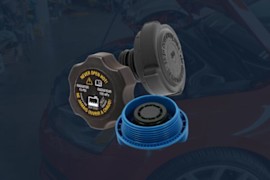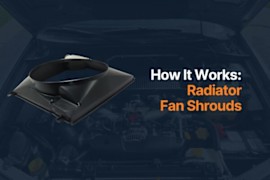{
"lazyNodes": false,
"abFitnotesFlag": false,
"abCrawlReviews": false,
"productOptionsCookie": false,
"orderDelayFlag": false,
"skipSessionCookie": false,
"covidMessage": false,
"fullTitleCookie": false,
"nrLoggerCookie": false,
"checkoutReviewCookie": false,
"productOptionSeqCookie": false,
"maintenanceFlag": false,
"bufferETACookie": false,
"multiShippingDiscountFlag": false,
"newFitmentFlag": false,
"surveyOptInFlag": false,
"crossSellFlag": false,
"skuMappingFlag": false,
"paySplitCookie": false,
"callDisableFlag": false,
"zipPaymentFlag": "u",
"hassleFreeReturn": false,
"lifetimeReplacement": false,
"cpn_off": false
}Ford Aspire Radiators
Shop Catalog
![]() WARNING: This product can expose you to chemical which is known to the State of California to cause cancer and birth defects or other reproductive harm. For more information go to www.P65Warnings.ca.gov.
WARNING: This product can expose you to chemical which is known to the State of California to cause cancer and birth defects or other reproductive harm. For more information go to www.P65Warnings.ca.gov.
Product Questions & Answers
Customer Guides
Quick Look and Fixes for the Ford Aspire Radiator
Serving as a vehicle engine's cooling system; the radiator makes or breaks your driving experience. No matter how sleek your Ford Aspire is, if your radiator breaks down on you, you end up with a failed hot engine and an even hotter head. Normally, radiator issues are addressed by professionals, but in case you're caught in the middle of nowhere, here are a few tips on how to deal when a Ford Aspire radiator overheats:
Pull-over
This is the part where most vehicle owners get into even more trouble. The moment they see their engine showing signs of overheating, their first instinct is to drive faster to make it to the shop. This is wrong. Pushing the engine further will make the temperature in the engine too hot, and will cause the components to start melting. This will result in more costly repairs.
Turn off and chill
Allow the car to cool for about 15 to 20 minutes before touching anything. Overheating means the engine and the radiator is hot enough to cause injury. You will not be able to do proper troubleshooting if you have a burnt hand.
The usual suspect
Check for any coolant spill. This is the most common culprit when the radiator overheats. Follow the spill to the leaking hose and do an emergency repair. Open the coolant filler cap and pour in peppers. The peppers will lock the small hole and clog it up so that you can start your car again.
Wrap it up
If you don't have pepper handy (who does?) then maybe you have a duct tape handy. A true DIY person always have a duct tape, everyone knows that. Locate the leaking rubber radiator hose and seal it with duct tape. This should hold until you get to a place where you can properly fix it.
Fill her up
Once you have the leak under control, check the radiator fluid status. Gauge if it's enough to get you back home or to a shop. If it's not enough, you can temporarily fill it up with regular water.
Finally home
When you finally get home, or to a shop, check other issues that could've caused the radiator failure. Several other culprits that could have caused the malfunction are broken or slipping drive belts, bad cooling fan, a vacuum leak, and broken down thermostat. All of these probable issues either need adjusting or replacing.
Radiators play the very important role of keeping your engine and your head cool when driving. Initially made with metal, the recently manufactured radiators, like the one in a Ford Aspire, are made of plastic headers with aluminum cores. This makes the radiator one of the most costly part to replace. Although meant to last for about eight to ten years, most radiators break down because of lack of maintenance. Here are some ways to prolong the service life of your Ford Aspire radiator:
Regular flushing
To keep your radiator in tip-top shape, make sure you have regular coolant flushing routines. Overtime, the radiator accumulates solid deposits like dust and debris that could cause clogging. The simple flushing procedure begins with draining the old coolant from the radiator. Once everything is drained, pour in the radiator flush solution then mix with water. Start the car and let it run for about ten minutes. Let the engine cool down before draining the radiator flush solution. Finally refill your radiator with fresh coolant. This procedure allows the water and the anti-freeze mixture to continue to flow properly.
Check for leaks
Most people think that coolant leaks only happen on hoses, so they feel secured with just pepper and duct tapes. However, leaks are not limited on hoses alone. Leaks are also found on the heater core, water pump, heads gasket, freeze plugs, cylinder blocks and, even on the radiator itself. The hose can easily be remedied with either a quick fix or replacements. The other parts on the other hand can be easily fixed with silicone, radiator epoxy, cooling system sealant, stop -leak additive, soldering iron or epoxy gun. Regular visual inspection will allow you to address these leaks without having to shell out for expensive replacements.
Keep coolant level full
Coolants need to be on a certain level for the radiator to work properly. Visual inspection only takes less than five minutes, so really, there is no excuse. The coolant tank is a white plastic with markings that indicate either your radiator has low or high level of coolants. If you see that the level is still good then you can go on with your life. But if you see that the coolant level is dangerously low, don't wait for your vehicle to overheat. Filling it up is easier now, with store-bought pre-mixed coolant that you just need to empty into the radiator.
Other things to remember
While doing your radiator maintenance, don't forget to check the condition of your fan belts and fans. The belts normally loosen up and just needs re-tightening to allow the water pump to circulate properly. The fans are mechanical parts that fail because of a bad fan clutch or a missing fan shroud. Either way, something will need replacing if you have fan issues.






